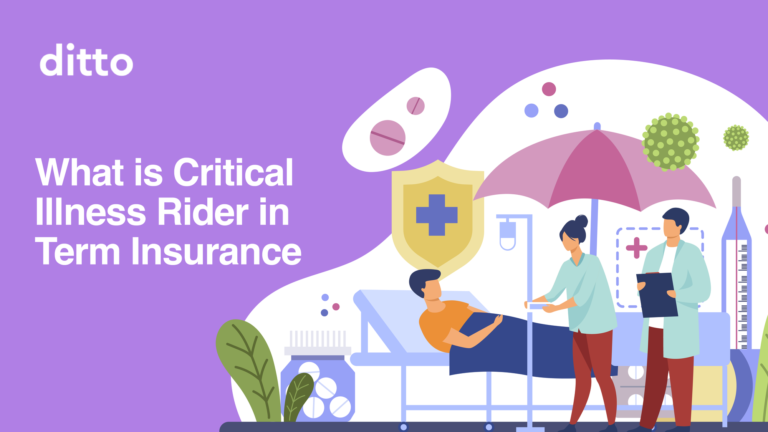Understanding Life Insurance for Individuals with Heart Disease
Introduction
Life insurance is an essential aspect of financial planning, providing a safety net for loved ones in the event of the policyholder’s death. However, obtaining life insurance can be more challenging for individuals with pre-existing medical conditions, such as heart disease. This comprehensive guide aims to demystify the process of acquiring life insurance for those with heart disease, offering insights into the types of policies available, factors affecting premiums, and strategies to improve your chances of securing coverage.
What is Heart Disease?
Heart disease is a broad term encompassing various conditions that affect the heart’s function. Common types of heart disease include:
- Coronary Artery Disease (CAD): This condition involves the narrowing or blockage of the coronary arteries, usually due to plaque buildup, which can lead to heart attacks.
- Heart Failure: A condition where the heart cannot pump blood effectively, leading to symptoms like fatigue, shortness of breath, and swelling in the legs.
- Arrhythmias: Irregular heartbeats that can lead to palpitations, dizziness, or even sudden cardiac arrest.
- Valvular Heart Disease: Disorders affecting one or more of the heart valves, impacting blood flow within the heart.
- Congenital Heart Disease: Heart abnormalities present from birth that can affect the heart’s structure and function.
Understanding these conditions is crucial when seeking life insurance, as insurers will evaluate the type and severity of heart disease to determine eligibility and premiums.
The Importance of Life Insurance for Individuals with Heart Disease
Life insurance provides financial security for your dependents, covering expenses like funeral costs, outstanding debts, and ongoing living expenses. For individuals with heart disease, having life insurance is even more critical because of the higher risk of severe health events. It ensures that your loved ones are not burdened with financial difficulties in the event of your passing.
Key Benefits
- Financial Protection: Ensures that your family can maintain their standard of living.
- Debt Coverage: Helps pay off any outstanding loans or mortgages.
- Future Planning: Provides funds for future needs, such as children’s education or retirement for your spouse.
- Peace of Mind: Knowing that your family is protected can reduce stress and improve your quality of life.
Challenges in Obtaining Life Insurance with Heart Disease
Securing life insurance when you have heart disease can be challenging due to the perceived higher risk by insurers. Here are some common hurdles you might face:
- Higher Premiums: Individuals with heart disease often face higher premiums due to the increased risk of death associated with their condition.
- Limited Policy Options: Some insurers may offer limited policy types or coverage amounts.
- Extensive Medical Underwriting: Detailed medical examinations and history reviews are typically required.
- Possible Denials: In some cases, insurers might deny coverage altogether based on the severity of the heart disease.
Despite these challenges, it’s important to know that obtaining life insurance is still possible. Understanding the factors that influence insurance decisions can help you better prepare and improve your chances of securing a policy.
Factors Influencing Life Insurance for Individuals with Heart Disease
Several factors impact life insurance eligibility and premiums for those with heart disease. Insurers consider these aspects to assess the risk and determine the terms of the policy:
- Type and Severity of Heart Disease: The specific type of heart disease and its severity play a crucial role. For example, controlled arrhythmias may be viewed more favorably than severe coronary artery disease.
- Age at Diagnosis: The age at which you were diagnosed can influence the insurer’s decision. Early diagnosis followed by effective management can be a positive factor.
- Treatment and Management: Regular treatment, lifestyle changes, and medication compliance are important. Demonstrating effective management of the condition can improve your chances.
- Medical History: A detailed medical history, including any previous heart surgeries, hospitalizations, and ongoing medical care, will be scrutinized.
- Overall Health: Insurers also consider your overall health, including factors like weight, smoking status, and other medical conditions.
- Family History: A family history of heart disease or other hereditary conditions can influence the underwriting process.
Types of Life Insurance Policies Available
Despite the challenges, there are various types of life insurance policies available for individuals with heart disease:
Term Life Insurance
Term life insurance provides coverage for a specified period, such as 10, 20, or 30 years. It is generally more affordable than permanent life insurance but only pays out if the policyholder dies during the term. For individuals with heart disease, term life insurance can be a viable option, especially if the disease is well-managed and the applicant is relatively young.
Whole Life Insurance
Whole life insurance offers lifetime coverage and includes a savings component known as cash value, which grows over time. Premiums are higher compared to term life insurance, but the policy remains in effect as long as premiums are paid. For those with heart disease, whole life insurance can provide lifelong financial security for their dependents.
Guaranteed Issue Life Insurance
Guaranteed issue life insurance does not require a medical exam and is available to all applicants, regardless of health. However, it comes with higher premiums and lower coverage amounts. This type of policy can be a last-resort option for individuals with severe heart disease who are unable to qualify for other types of life insurance.
Simplified Issue Life Insurance
Simplified issue life insurance requires applicants to answer a series of health-related questions but does not mandate a medical exam. It offers a middle ground between guaranteed issue and traditional life insurance, with moderate premiums and coverage amounts. This can be an attractive option for those with less severe heart conditions.
Group Life Insurance
Group life insurance is often provided by employers as part of an employee benefits package. These policies typically offer limited coverage but can be easier to obtain for individuals with pre-existing conditions, including heart disease, since they do not usually require medical underwriting.
Tips for Securing Life Insurance with Heart Disease
While obtaining life insurance with heart disease can be challenging, certain strategies can help improve your chances:
1. Work with an Experienced Insurance Agent
An experienced insurance agent who understands the intricacies of heart disease and its impact on life insurance can guide you to suitable insurers and policies. They can help you navigate the application process and advocate on your behalf.
2. Improve Your Health
Making lifestyle changes to improve your overall health can positively influence your life insurance application. This includes:
- Quitting Smoking: Smoking significantly increases the risk of heart disease and can lead to higher premiums or denial of coverage.
- Maintaining a Healthy Weight: Obesity is a risk factor for heart disease. Losing weight through a balanced diet and regular exercise can improve your health profile.
- Managing Stress: Chronic stress can negatively impact heart health. Techniques such as meditation, yoga, or counseling can help manage stress levels.
3. Gather Comprehensive Medical Records
Providing detailed and accurate medical records, including all treatments, medications, and lifestyle changes, can demonstrate effective management of your heart condition to insurers. This transparency can lead to better underwriting decisions.
4. Consider Multiple Insurers
Different insurers have varying criteria for underwriting policies. Shopping around and getting quotes from multiple insurers can help you find the best coverage at the most affordable rates.
5. Opt for a Medical Exam
While it may seem daunting, opting for a medical exam can provide a complete picture of your health to the insurer, potentially leading to more favorable terms compared to policies that do not require an exam.
6. Be Honest in Your Application
Honesty is crucial when applying for life insurance. Misrepresenting your health status can lead to policy denial or cancellation. Providing accurate information ensures that your policy remains valid and your beneficiaries are protected.
The Application Process
Understanding the application process can help you prepare and increase your chances of securing life insurance. Here’s a step-by-step guide:
1. Initial Consultation
Begin with a consultation with an insurance agent who specializes in high-risk cases. Discuss your heart condition and gather preliminary quotes.
2. Application Submission
Submit a detailed application, including personal information, medical history, and lifestyle habits. Be prepared to provide comprehensive documentation of your heart disease and its management.
3. Medical Underwriting
Underwriting involves a thorough review of your medical records, possibly including a medical exam. The insurer will assess your risk and determine the policy terms and premiums.
4. Policy Offer
Once underwriting is complete, the insurer will offer a policy based on their assessment. Review the terms carefully to ensure they meet your needs.
5. Policy Acceptance
If you agree to the terms, accept the policy and begin making premium payments. Keep all documents in a safe place and inform your beneficiaries about the policy details.
Real-Life Examples
To illustrate the process and potential outcomes, here are a few real-life examples of individuals with heart disease securing life insurance:
Case Study 1: John, 45, with Controlled Hypertension
John, a 45-year-old with controlled hypertension, worked with an experienced insurance agent to find a suitable policy. He provided detailed medical records and opted for a medical exam. As a result, he secured a 20-year term life insurance policy with moderate premiums, providing financial security for his family.
Case Study 2: Maria, 60, with a History of Heart Surgery
Maria, a 60-year-old who underwent heart surgery five years ago, faced challenges in finding coverage. After exploring multiple insurers, she opted for a simplified issue life insurance policy, which required answering health questions but no medical exam. While the premiums were higher, she successfully obtained coverage to protect her grandchildren.
Case Study 3: Robert, 50, with Congestive Heart Failure
Robert, a 50-year-old with congestive heart failure, initially struggled to find life insurance. He eventually found a guaranteed issue life insurance policy, providing limited coverage with higher premiums. Although not ideal, it offered some financial protection for his wife.
Conclusion
Life insurance is a crucial component of financial planning, especially for individuals with heart disease. While obtaining coverage can be challenging, understanding the types of policies available, the factors influencing premiums, and strategies to improve your chances can help you secure the protection your loved ones need. By working with experienced agents, improving your health, and being transparent in your application, you can navigate the complexities of life insurance and achieve peace of mind.
Ultimately, the key is to be proactive and persistent. With the right approach, you can find a life insurance policy that meets your needs and provides the financial security your family deserves.






